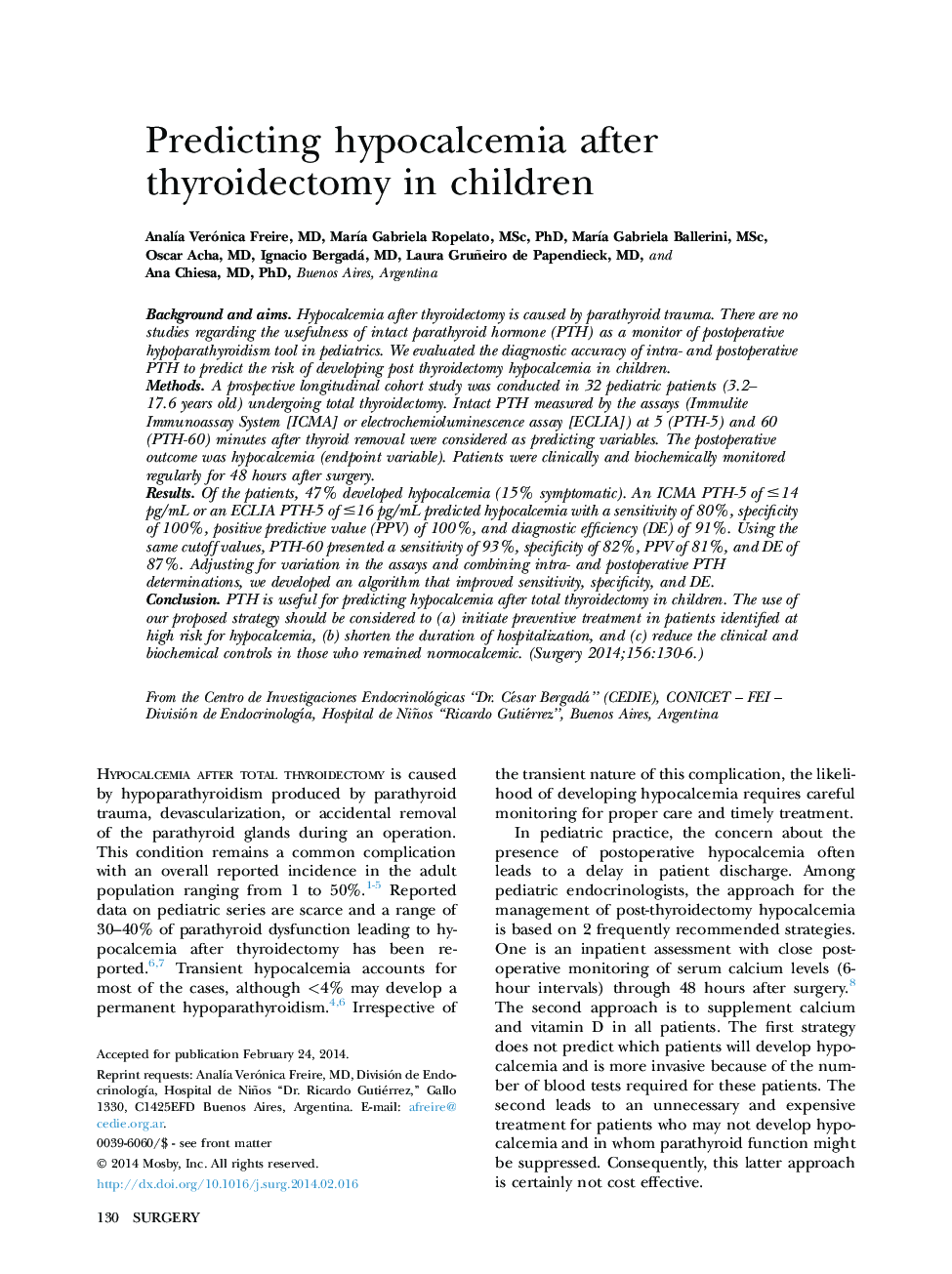| Article ID | Journal | Published Year | Pages | File Type |
|---|---|---|---|---|
| 4307955 | Surgery | 2014 | 7 Pages |
Background and aimsHypocalcemia after thyroidectomy is caused by parathyroid trauma. There are no studies regarding the usefulness of intact parathyroid hormone (PTH) as a monitor of postoperative hypoparathyroidism tool in pediatrics. We evaluated the diagnostic accuracy of intra- and postoperative PTH to predict the risk of developing post thyroidectomy hypocalcemia in children.MethodsA prospective longitudinal cohort study was conducted in 32 pediatric patients (3.2–17.6 years old) undergoing total thyroidectomy. Intact PTH measured by the assays (Immulite Immunoassay System [ICMA] or electrochemioluminescence assay [ECLIA]) at 5 (PTH-5) and 60 (PTH-60) minutes after thyroid removal were considered as predicting variables. The postoperative outcome was hypocalcemia (endpoint variable). Patients were clinically and biochemically monitored regularly for 48 hours after surgery.ResultsOf the patients, 47% developed hypocalcemia (15% symptomatic). An ICMA PTH-5 of ≤14 pg/mL or an ECLIA PTH-5 of ≤16 pg/mL predicted hypocalcemia with a sensitivity of 80%, specificity of 100%, positive predictive value (PPV) of 100%, and diagnostic efficiency (DE) of 91%. Using the same cutoff values, PTH-60 presented a sensitivity of 93%, specificity of 82%, PPV of 81%, and DE of 87%. Adjusting for variation in the assays and combining intra- and postoperative PTH determinations, we developed an algorithm that improved sensitivity, specificity, and DE.ConclusionPTH is useful for predicting hypocalcemia after total thyroidectomy in children. The use of our proposed strategy should be considered to (a) initiate preventive treatment in patients identified at high risk for hypocalcemia, (b) shorten the duration of hospitalization, and (c) reduce the clinical and biochemical controls in those who remained normocalcemic.
